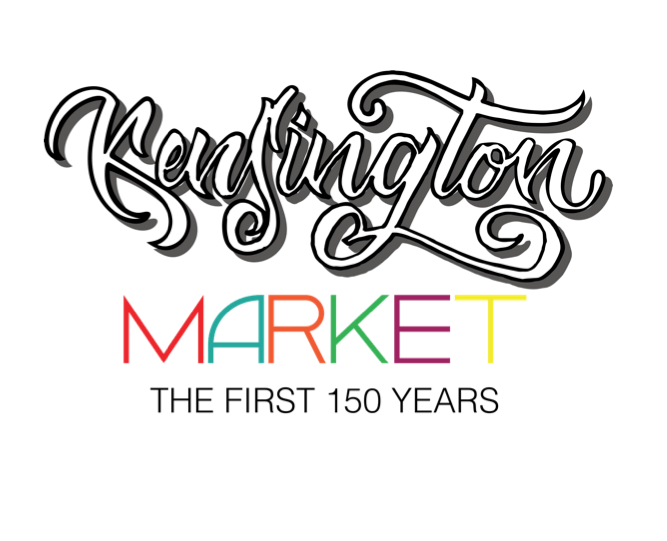on
BY ALYSSA MAHADEO
Well known in Toronto for its distinct multicultural and unique neighborhood Kensington Market is a piece of land rich in cultural history that has a story yet to be told. Located between Dundas and College, west of Spadina until Bathurst Street, Kensington Market is an older neighborhood and one of the city’s most well-known for its vibrant, thriving community and its artistic culture that draws people to it’s plethora of generational history.
Known in Toronto as one of the most unique neighborhoods in Canada and also in the world, Kensington Market has been the primary place of settlement for new immigrants to Canada coming from Jewish, Portuguese, Caribbean, Eastern European and Asian backgrounds. Over the years this six-block market has been a safe harbor to new immigrants who have put down roots and contributed to the cultural entryway it is known as today. The Kensington lifestyle is one that goes back many generations kept alive through the stories of people who have lived there in the past and those who still reside there today exploring the forces that will impact the market’s future.
In an effort to preserve the culture of the market a new project in the early stages of production is looking to document and share a story that spans over 150 years. The Mission Media Company, the team behind Kensington Market: The FIRST 150 Years is in the early stages of creating a feature length documentary that will tell the story delving 150 years into the history of Toronto’s Kensington Market.
This documentary is inspired by the deep cultural roots of the market and is led by Stuart Clarfield the film’s director and a 4th generation son of the market with a long history of involvement within the community village. “It began with the building of St. Steven-In-The-Field Church on College Street, built originally in 1858 by the man who originally owned all of the land named Bellevue,” explains Clarfield. “He began developing the land, and eventually it became a landing site for immigrants coming from Ireland, Scotland and England in the late 1880s-1890s, then for the next thirty to forty years for eastern Europeans and then after WWII when a wave of immigrants from the Caribbean, Asia and South America.”
The purpose of the project is to put in perspective what life in the market has looked like in last 150 years looking at the different iterations of the village that has bloomed and faded and replaced by another village over and over again with every new generation. They were inspired to make this film to share the dynamic, cultural, historical and entrepreneurial spirit of the Kensington neighborhood, while also taking a look at the forces playing on the market, where it might be going the more the city changes and evolves.
People who visit Kensington Market are drawn to its delightful and colorful alternative to the concrete jungle growing around it. Despite its numerous incarnations, the market manages to hold onto its exclusively diverse charm and free-spirited nature, but as time passes we wonder what changes another fifty years will bring.
In their mission to capture Kensington Market’s rich 150-year history, diversity and artful past, present and future The Mission Media Company requires the help of the community. If you have roots in the market, or a special tie to it that you think is worth sharing, they’d love to hear your story. They are currently seeing archival film, video, photos and other materials that show the different eras of the market. “Our intention is to transport our audience back two centuries to the beginning of the market and guide them through each era of the neighborhood’s life cycle.”
The Caribbean community has played a major role in the life of Kensington Market. A wave of immigration from the Caribbean began in the 1950’s and 1960’s after an influx of nursing and other jobs became available and many Caribbean-Canadians relocated near Kensington Market to open businesses and join in the community. Anglican Church St. Stephen In-the-fields became home to a Caribbean community and it remains an active congregation today. Heritage businesses like “Caribbean Corner”, opened in 1978 by Yvonne Grant, continues to thrive in the market in 2016. In November 2006, Kensington Market was designated a National Historic Site of Canada.
“The Market has changed very quickly in the last twelve to eighteen months and a lot of the citizens who have had personal experiences there are either passing away, or leaving and there is so much of their stories that has been left untold,” says Clarfield, explaining why they are anxious to get this project up and running.
“There’s aspects of the life of the market and if we are going to capture the flavor of them we need to do it immediately.” The project will be hosting a Pop-up documentary booth in Kensington on March 26th and April 3rd allowing the opportunity for people to share their views and experiences about Kensington inviting the community to join them in their efforts to make this project a reality. They also hope to complete the film in time for Canada’s 150th Anniversary.
For more information visit their campaign funding page ad for details on contributing through sponsorships and any other way you can! Visit www.indiegogo.com/at/Kensington150 find them on Facebook at Kensington150 or follow them on Twitter and Instagram @Kensington150.
“Kensington is this canvas where everyone has come and thrown their paint on it and it just sits together; it’s noisy but something about it works well together.”
Stay in the loop with exclusive news, stories, and insights—delivered straight to your inbox. No fluff, just real content that matters. Sign up today!












